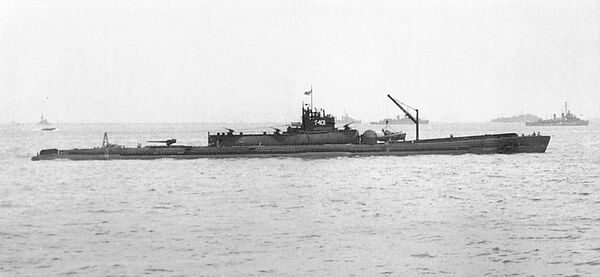WASHINGTON, December 3 (RIA Novosti) – US researchers diving off the coast of Hawaii have discovered a sunken Japanese submarine scuttled by the United States after World War II in order to keep the boat’s advanced technology out of the hands of the Soviet Union.
The discovery of the massive I-400 submarine deep in the waters off the coast of the Hawaiian island of Oahu resolved a Cold War-era mystery about the ship’s whereabouts after US forces intentionally made it disappear in 1946, the University of Hawaii at Manoa said in a statement this week.
“It was the first of its kind of only three built, so it is a unique and very historic submarine,” Terry Kerb, operations director and chief submarine pilot for the university’s Hawaii Undersea Research Laboratory, said in the statement. “Finding it where we did was totally unexpected. All our research pointed to it being further out to sea.”
With a length of 400 feet (122 meters), the I-400 was the largest submarine ever built until nuclear-powered submarines were introduced in the 1960s.
It could travel around the world one and a half times without refueling and featured cutting-edge technology for the time that the United States feared could be exploited by the Soviets during the Cold War.
It could carry up to three floatplane bombers that could be launched from the submarine almost immediately after it surfaced, each of which was capable of carrying a 1,800-pound (816-kilogram) bomb that could be be dropped on the US mainland, according to researchers involved in the discovery.
“The innovation of air strike capability from long-range submarines represented a tactical change in submarine doctrine,” James Delgado, director of the US National Oceanic and Atmospheric Administration’s Maritime Heritage program, who participated in the dives, said in the statement.
The ship’s giant watertight hangar was a technological advance in the direction of the ultimate development of ballistic missile launching capabilities for US submarines at the dawn of the nuclear era, Delgado added.
The I-400 – known as a Sen-Toku class submarine – was one of five Japanese subs captured by US forces at the end of World War II and taken to Pearl Harbor in Hawaii for inspection. The Soviets demanded access to the ships in 1946 under the terms of the treaty that ended the war, but the US Navy sank the submarines and told Moscow that it did not know where the boats were located.
The researchers discovered the submarine in more than 2,300 feet (700 meters) of water in August but only announced the find Monday following consultations with the US State Department and Japanese government officials, the university said in the statement.


